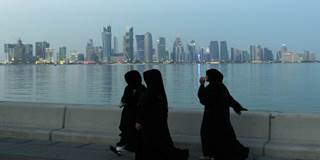One of the top priorities for the UN’s Sustainable Development Agenda is to make cities "inclusive, safe, resilient, and sustainable." For city leaders in the Arab world, this means embracing strategies that put the needs of women and girls at the center of the urban planning process.
BEIRUT – One of the top priorities for the United Nations Sustainable Development Agenda is to make cities “inclusive, safe, resilient, and sustainable.” City leaders can take a simple step that would go long a way toward achieving this goal: putting the needs of women and girls at the center of the urban planning process.
By 2030, the majority of the world’s population will live in urban areas. And yet, while increased urbanization – and the economic access, mobility, and greater autonomy that accompanies it – will generate new opportunities for women, ensuring gender equality will also become more difficult. This concern is especially relevant to the Arab world.
In many Arab communities, urban space is, by default, male space. Men act as if they “own” the street, which is reflected in how they walk and how they treat women in public. In many Arab cities, as is true elsewhere, men are also far more likely than women to litter, reinforcing the perception that men consider public spaces to be their personal property.

BEIRUT – One of the top priorities for the United Nations Sustainable Development Agenda is to make cities “inclusive, safe, resilient, and sustainable.” City leaders can take a simple step that would go long a way toward achieving this goal: putting the needs of women and girls at the center of the urban planning process.
By 2030, the majority of the world’s population will live in urban areas. And yet, while increased urbanization – and the economic access, mobility, and greater autonomy that accompanies it – will generate new opportunities for women, ensuring gender equality will also become more difficult. This concern is especially relevant to the Arab world.
In many Arab communities, urban space is, by default, male space. Men act as if they “own” the street, which is reflected in how they walk and how they treat women in public. In many Arab cities, as is true elsewhere, men are also far more likely than women to litter, reinforcing the perception that men consider public spaces to be their personal property.